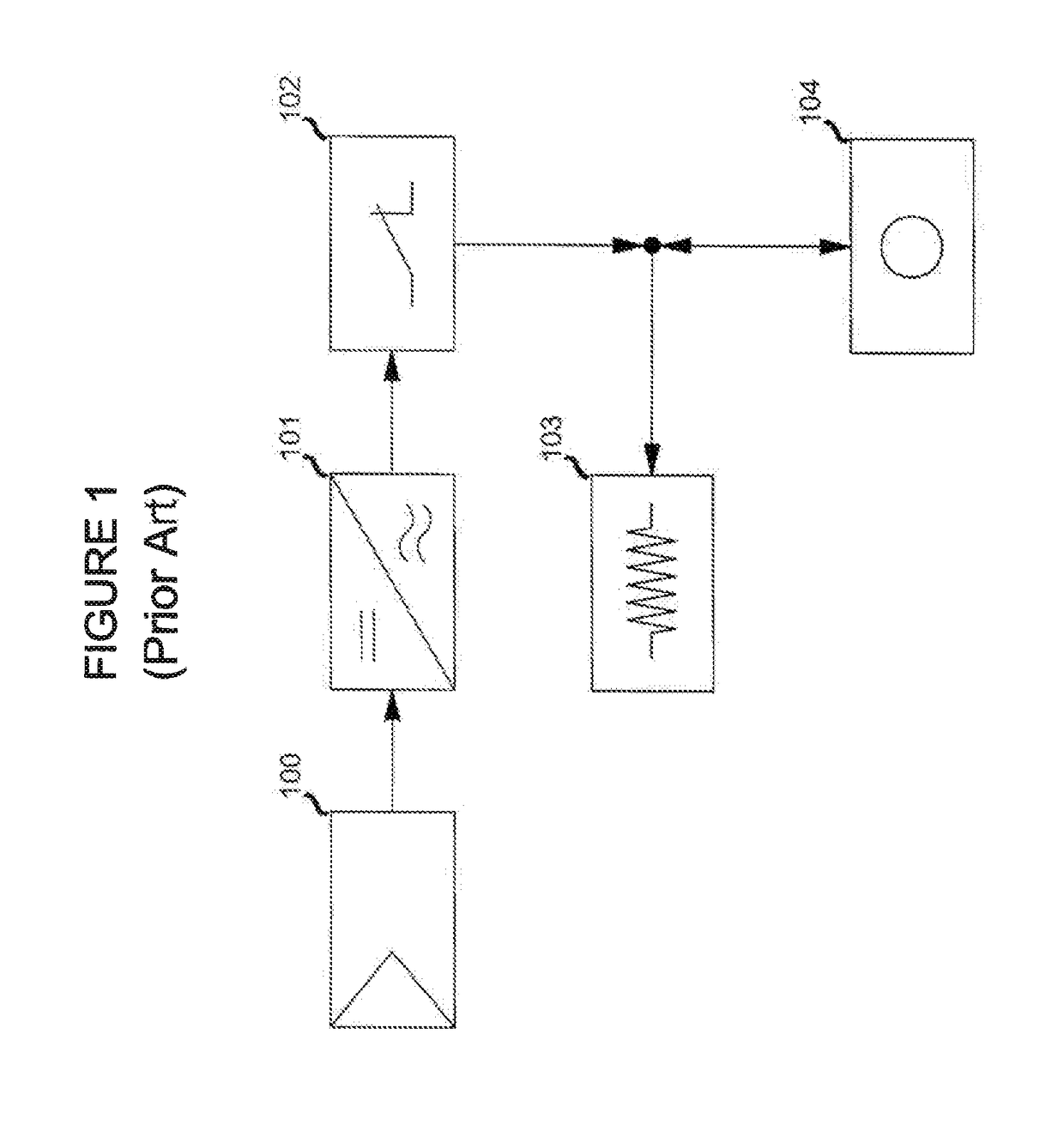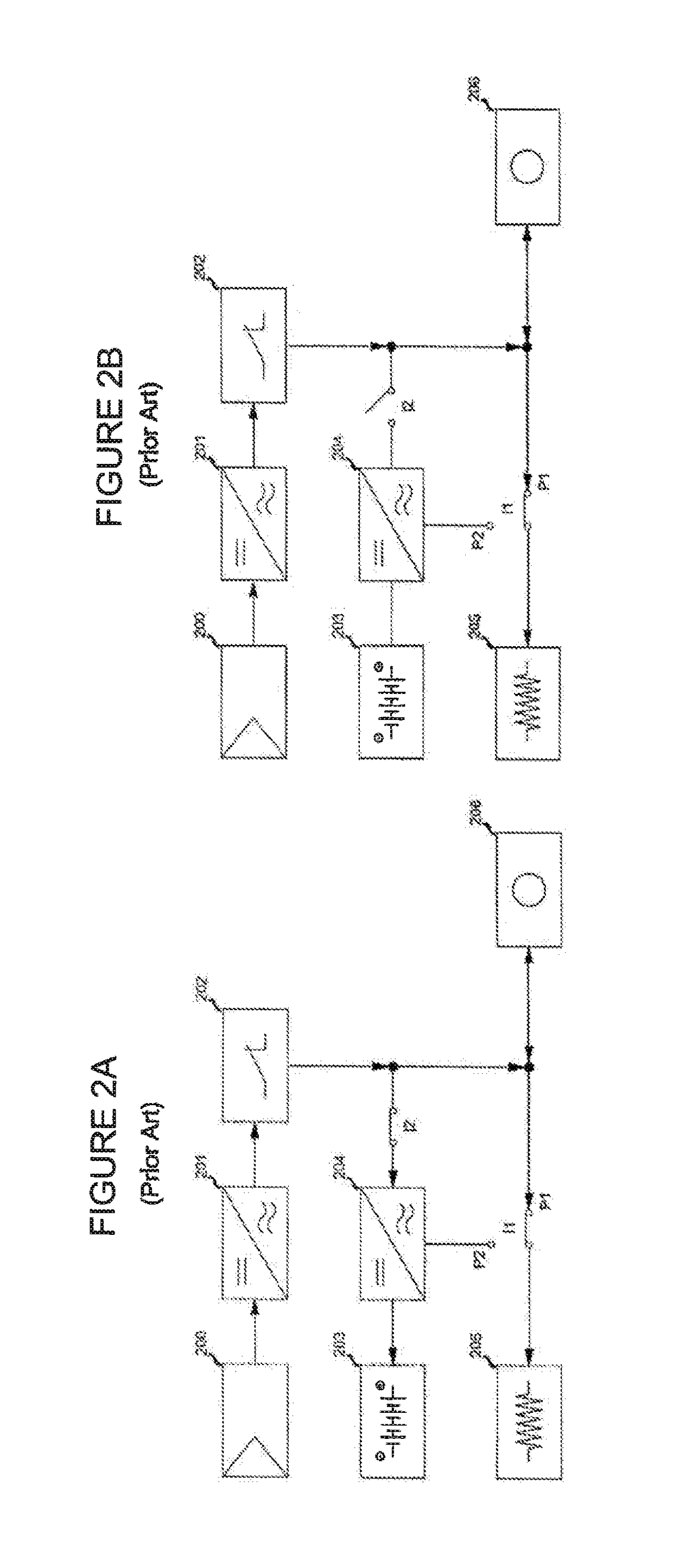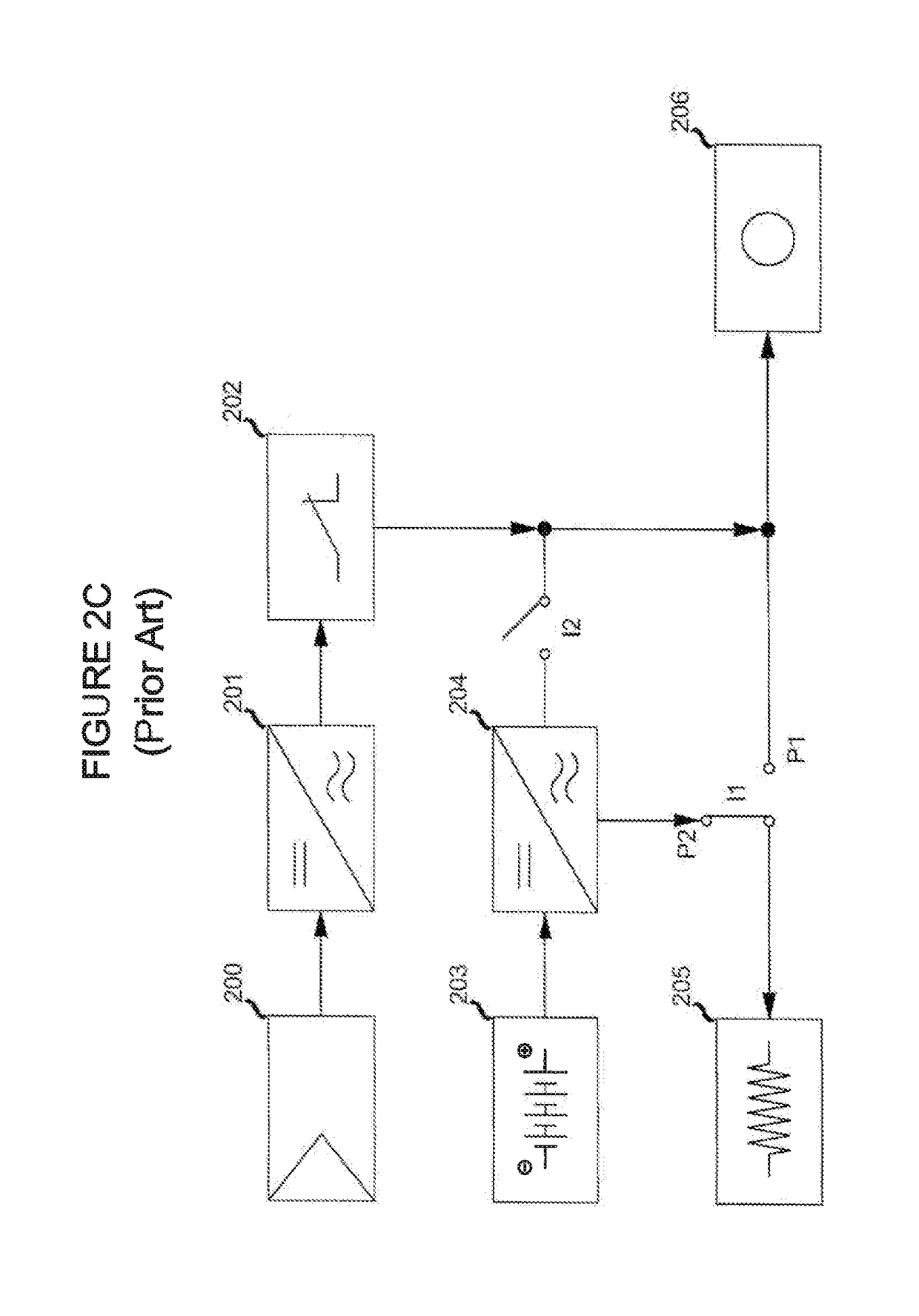Module for storing/drawing electricity in/from an electric accumulator applicable to photovoltaic systems, a photovoltaic system and a method of upgrading a photovoltaic system
a photovoltaic system and electric accumulator technology, applied in the field of photovoltaic systems, can solve the problems of inability to have photovoltaic systems which store, inability to combine two forms of use, and inability to obtain photovoltaic systems. the effect of simple and cost-effectiv
- Summary
- Abstract
- Description
- Claims
- Application Information
AI Technical Summary
Benefits of technology
Problems solved by technology
Method used
Image
Examples
Embodiment Construction
[0040]The following description and the corresponding drawings are provided only by way of illustrative, non-limiting example of the present invention which can be implemented according to other, different embodiments.
[0041]The object of the present invention is conceived to be applied to photovoltaic systems, e.g. installed to supply electricity to residential type users, but not only, thus to new and existing systems.
[0042]FIG. 4 shows a first embodiment of a photovoltaic system to which a module for storing and drawing electricity in and from an accumulator 402 is applied. The verbs “store” and “draw” indicate the functions of the module according to the present invention: to store the energy generated by the photovoltaic system, in particular by the photovoltaic panel 401 in the accumulator 402, and to draw energy from the accumulator 402 to supply it to the inverter 404. To this end, the module comprises first terminals adapted to be connected to the photovoltaic panel 401 and ...
PUM
 Login to View More
Login to View More Abstract
Description
Claims
Application Information
 Login to View More
Login to View More - R&D
- Intellectual Property
- Life Sciences
- Materials
- Tech Scout
- Unparalleled Data Quality
- Higher Quality Content
- 60% Fewer Hallucinations
Browse by: Latest US Patents, China's latest patents, Technical Efficacy Thesaurus, Application Domain, Technology Topic, Popular Technical Reports.
© 2025 PatSnap. All rights reserved.Legal|Privacy policy|Modern Slavery Act Transparency Statement|Sitemap|About US| Contact US: help@patsnap.com



